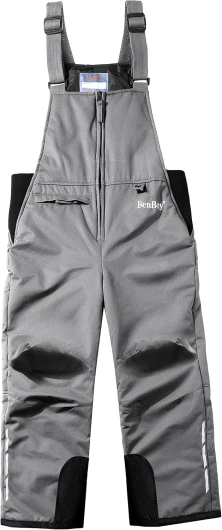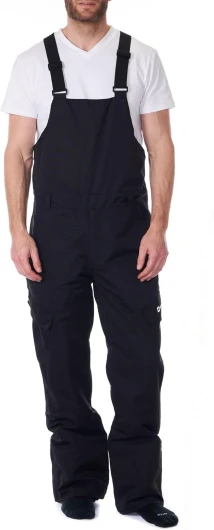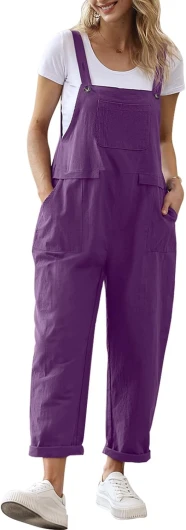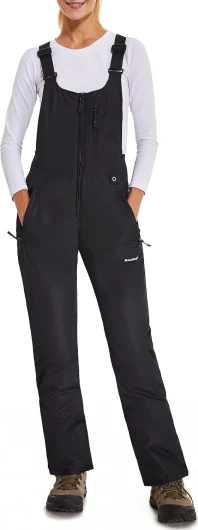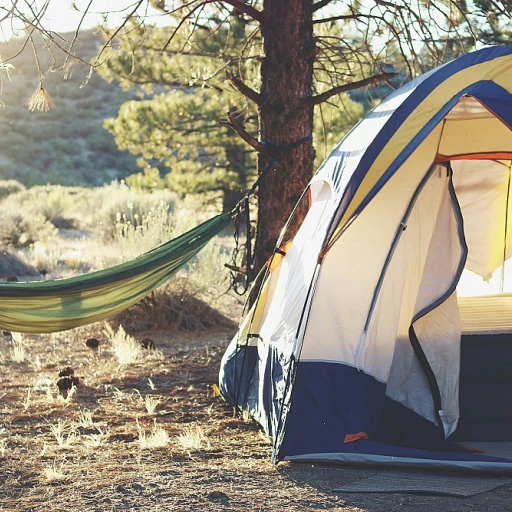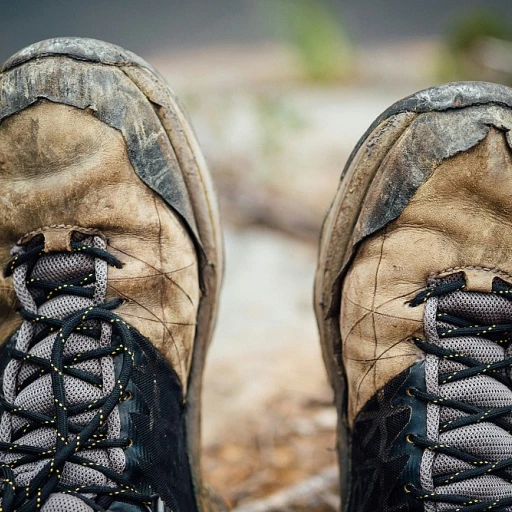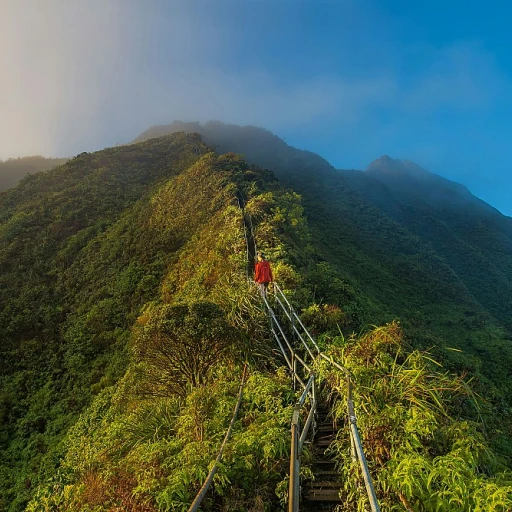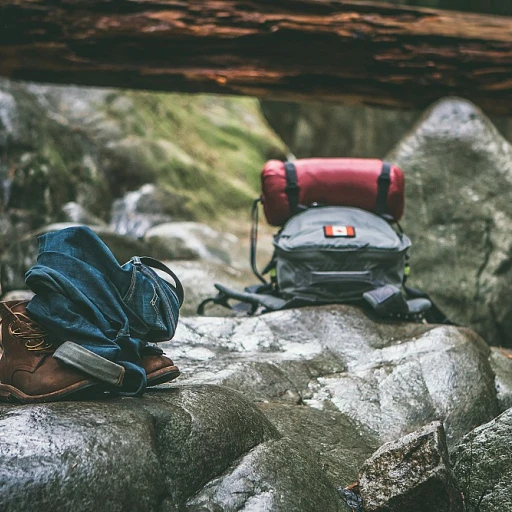
Understanding the Role of Salopettes in Hiking
Integrating Salopettes into Your Outdoor Wardrobe
Understanding the role of salopettes in hiking involves recognizing their unique contributions to outdoor adventures. Designed initially as ski trousers, salopettes offer a level of durability and protection that can be highly beneficial for hikers. Though often related to skiing and snow conditions, they provide a reliable barrier against harsh environmental elements. For outdoor enthusiasts, particularly those navigating colder climates or snowy terrains, salopettes represent an essential clothing item. The high sides and full-length design offer substantial coverage, creating a protective barrier against snow and cold temperatures. Enhanced by the freedom of movement allowed by their fit, salopettes can accommodate a variety of activities, from hiking to winter sports. While shopping for hiking gear, considering salopettes could add significant value to your hiking experience. Whether you're exploring high altitudes or encountering varied conditions, selecting the right size and fit is crucial. Salopettes are available in different colours and sizes to match personal preferences and ensure comfort. To assist with your options, you can explore lightweight pants for hiking adventures, which may also highlight alternative apparel that suits different environmental demands. Moreover, the versatility of salopettes makes them a worthy consideration beyond the niche of ski lovers. When thoughtfully paired with the perfect hiking boots, this sturdy attire can enhance your trekking journeys, ensuring you remain well-protected and comfortable on the trail.Material Matters: Choosing the Right Salopettes
Choosing the Best Fabric for Your Salopettes
Ski trousers, or salopettes, have come a long way with materials that top the chart in durability and comfort. With numerous activities on the agenda, including hiking and skiing, picking salopettes with the right fabric means evaluating some critical factors. Material matters a great deal when selecting the ideal winter sports apparel.
Modern salopettes feature fabrics designed to withstand extreme snow conditions. Typically, a high-quality pair is made of breathable, waterproof, and windproof materials to check the boxes for weather resistance and comfort. Offering freedom of movement, the right salopettes fabric eliminates unnecessary friction while engaging in a variety of outdoor activities. In this context, consider exploring the best men's trekking shorts for your next adventure as a complimentary piece of attire when discussing outdoor wear.
The Importance of Price and Durability
Price can vary significantly when selecting salopettes, ranging from low price to high price options, often dictated by material quality and brand credibility. While high-end options provide added benefits like reinforced stitching and additional pockets, budget-conscious buyers can find deals that offer reasonable protection without breaking the bank.
Size and Comfort: Getting the Right Fit
Finding the perfect fit is key to maximizing the utility of salopettes. It's crucial to select the size that corresponds with body types and intended clothing layers underneath. Some brands offer full length and high sizes for taller individuals, ensuring none of that cold weather creeps in.
Ultimately, when selecting salopettes, one should consider the fabric's durability, size options, and price range. This combination of factors can ensure comfort and practicality, allowing the wearer to brave the elements with confidence.
Fit and Functionality: Key Features to Look For
Key Attributes of Functional Salopettes
When embarking on outdoor adventures, selecting salopettes with the right fit and functionality is crucial to ensure comfort and performance. The design of these versatile pieces—be it for skiing, hiking, or other winter sports activities—encompasses several key elements. Firstly, consider the fit and size of the salopettes. A snug fit that allows freedom of movement is essential, avoiding any restrictive feel that could hamper your performance. Salopettes should not be too tight, ensuring easy layering with base layers for added warmth and comfort. Additionally, the full-length construction provides excellent coverage and protection from the elements. Functionality often comes linked with the choice of fabric. Opt for fabrics that offer a high degree of water resistance and breathability, which are vital in maintaining a comfortable microclimate within the apparel. Brands offer a variety of materials featuring different price points—ranging from low to high price. These differing options can include items with reinforced knee panels or adjustable waistbands for enhanced durability and comfort. Another significant feature to look for is side ventilation zips, which come in handy during intense activities by allowing quick temperature regulation. Furthermore, the salopettes' feature of reinforced scuff guards increases longevity, particularly in demanding conditions. In terms of aesthetic and practical considerations, salopettes are available in several colours to complement your overall outdoor gear ensemble, whether paired with ski jackets or hiking boots. These design elements not only offer personalization but also practical benefits during winter adventures. For those interested in various outdoor pursuits, salopettes designed for skiing, such as ski trousers or pants, can double as excellent options for more casual winter hiking or mountaineering endeavors. For more insights on optimizing your outdoor gear choices, you can explore the versatility of combining clothing with the art of chalkboard climbing for enhanced performance and style. This exploration offers a deeper view into maximizing your outdoor clothing ensemble.Weathering the Elements: Salopettes for All Seasons
Braving Various Weather Challenges
When considering outdoor adventures, it’s crucial to be prepared for diverse weather conditions. Salopettes are designed to withstand cold, rainy, and even snowy climates, making them an excellent choice for winter sports like skiing. Selecting the right item becomes essential, as these trousers must fit not only in terms of size but also in functionality to ensure you're shielded against the elements. Salopettes ski options often incorporate high-quality fabrics that offer both protection and comfort. Many of these trousers feature full-length zippers on the sides, which aid in quick and easy removal or adjustments, perfect when the weather takes a sudden turn. High-end options might use advanced materials that repel water and maximize warmth, while lower-priced alternatives might focus on practicality and durability. For those in the United States, the variety of conditions—from the snow-capped mountains to the damp coastal regions—means selecting salopettes that provide freedom of movement without sacrificing protection is key. Look for items that allow base layers underneath; your fit should accommodate layering without feeling restricted. Whether you're on a high mountain or low valley trail, the freedom of movement combined with the protective features of your salopettes will make your hiking adventure both comfortable and safe. Prioritize features that align with your activities, whether it be skiing or extensive trekking. Many brands offer free shipping, so take this into consideration when checking the price and selecting your size.Pairing Salopettes with the Perfect Hiking Boots
Perfect Pairings for Maximum Performance
Selecting the right hiking boots to pair with your salopettes can be the key to a successful and comfortable trek across various terrains. The synergy between your ski salopettes and hiking boots lies in their combined ability to provide weather resistance, flexibility, and support during your adventures. One pivotal aspect of this pairing is ensuring the freedom of movement. Opt for boots that accommodate the full length and fabric of your ski trousers. The boots should allow easy adjustments for different pant sizes and fit snugly at the ankle to prevent snow or dirt ingress. Many outdoor enthusiasts favor boots equipped with high-quality waterproof materials if skiing or hiking in wet or snowy conditions. Consider the base layers under your salopettes. They can add to the comfort when worn under appropriately-sized hiking boots. Choose sizes that offer enough room for thick winter socks or additional warming layers. Price ranges can vary significantly across brands, so consider both high and low price points based on your intended activities. While a high price often reflects advanced features and premium quality, there are also affordable options that offer decent protection and comfort. Lastly, color and style matter. While matching your ski jackets and salopettes feature with boots might seem secondary, tone cohesiveness can enhance the overall outdoor experience, making you feel both functional and stylish. When exploring options within the United States, look for deals like free shipping to optimize your purchase within a budget.Caring for Your Salopettes and Hiking Boots
Maintaining Condition for Longevity
When it comes to preserving the longevity of your salopettes and hiking boots, proper care is essential. Both items are investments that enhance your outdoor activities such as skiing and winter sports, and protecting their quality extends their lifespan, ensuring you receive the best value for the price. Cleaning TechniquesTo maintain the integrity of your salopettes’ high-quality fabric, regular cleaning is crucial. Follow the care instructions provided for your specific trousers or pants to avoid damage. This often includes using cold water and mild detergents, avoiding harsh chemicals that might compromise the fabric and its weather-resistant properties. Similarly, your hiking boots require occasional cleaning to prevent dirt buildup, which could degrade the material. Storage and Handling
Correct storage is just as important as cleaning in maintaining your salopettes and boots. Ensure both items are completely dry before storing them to prevent mold and odor. Storing salopettes in a cool, dry place will help preserve their fit and functionality. For hiking boots, consider shoe trees to maintain shape and aid in drying if they become wet during outdoor adventures, whether in snow or rain. Regular Inspections
Before heading outdoors, always inspect your salopettes and boots for any signs of wear or tear. With salopettes featuring critical elements like zippers and seams, detecting issues early can prevent significant problems during your hiking escapades. For your boots, check for signs like worn soles or weakened laces that might compromise their performance or your safety. Protection Agents
Protection sprays tailored for specific fabrics can further safeguard your gear from the elements. Applying a fabric protector to salopettes enhances their resistance to snow and moisture, while a waterproofing agent on hiking boots ensures they remain impervious under adverse conditions. Looking after your salopettes and hiking boots isn’t just about maintaining their appearance. It ensures reliable performance in diverse weather conditions, allows for a more enjoyable experience and offers better freedom of movement in your pursuits.

